80 Years of a Military Icon, the Legendary Hanhart TachyTele Pilot’s Chronograph
An iconic military chronograph with dual scales measuring both distance and speed.
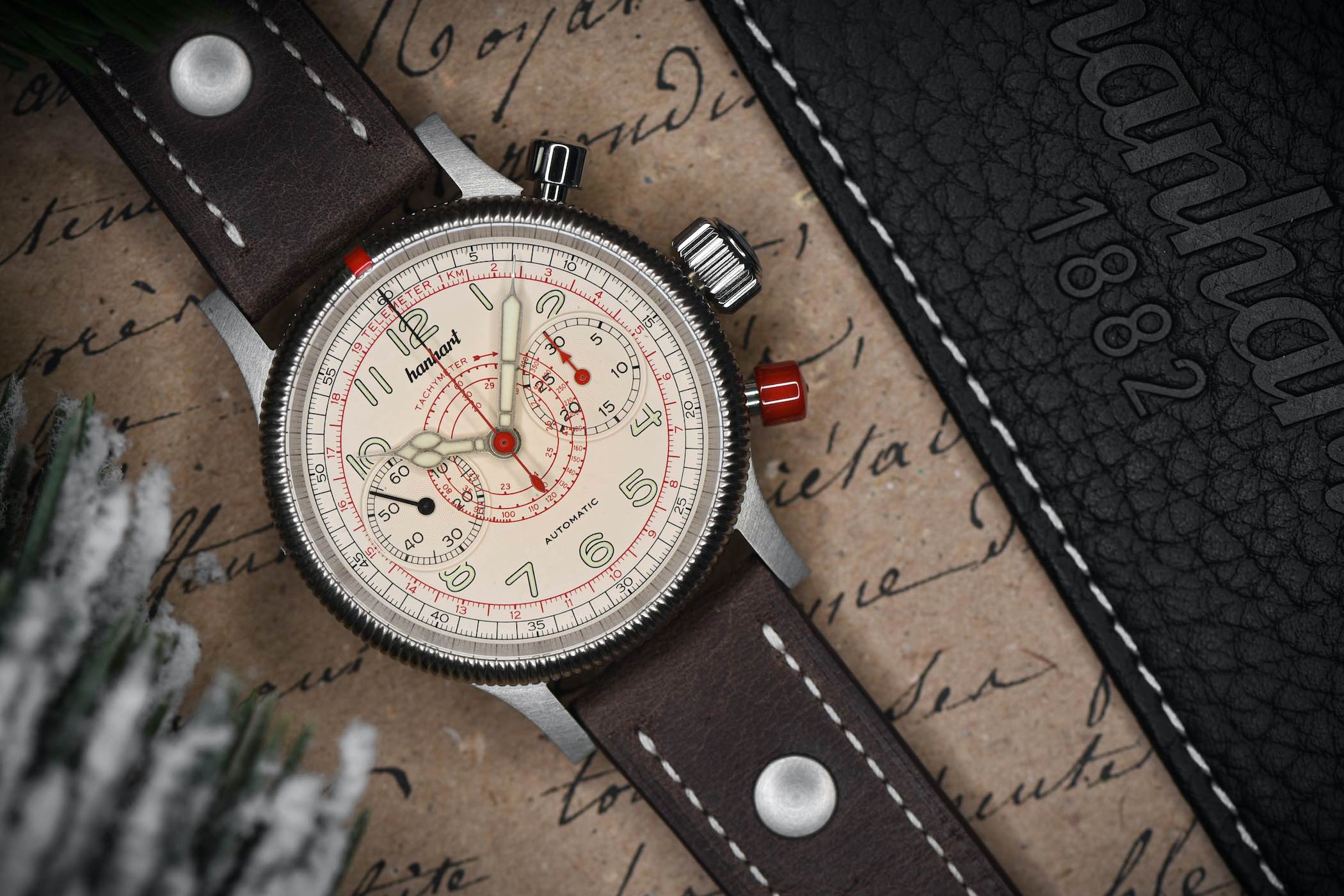
Hanhart isn’t a name that many watch enthusiasts think of first, or are even familiar with. The Swiss/German brand flies a bit under the radar in the US and is often overshadowed by more mainstream names like Tutima, Bremont or Hamilton – at least when it comes to military/pilots watches. The brand has a long and interesting history, however, it is best known for its precision chronographs and mechanical stopwatches. Back in 1939, the company launched the TachyTele chronograph for pilots with both a telemeter to determine distance and tachymeter to measure speed. Eighty years later, the brand still offers a faithful re-edition of the piece and nostalgia comes standard. Let’s take a closer look at one of the great wartime chronographs that’s still favoured by pilots today.
Background
Although manufacturing occurs in Germany, Hanhart was initially founded in Diessenhofen, Switzerland by watchmaker Johann A. Hanhart in 1882. The brand’s registered offices are still located there today. The manufactory relocated to Schwenningen in southern Germany in 1902 and Hanhart introduced its first stopwatch in 1924. This was the product of Johann’s son, sports enthusiast Wilhelm Julius, who had been frustrated by the almost prohibitively priced and hard to get Swiss stopwatches of the time. He dedicated himself to producing an affordable stopwatch and the legend of the company begins here.
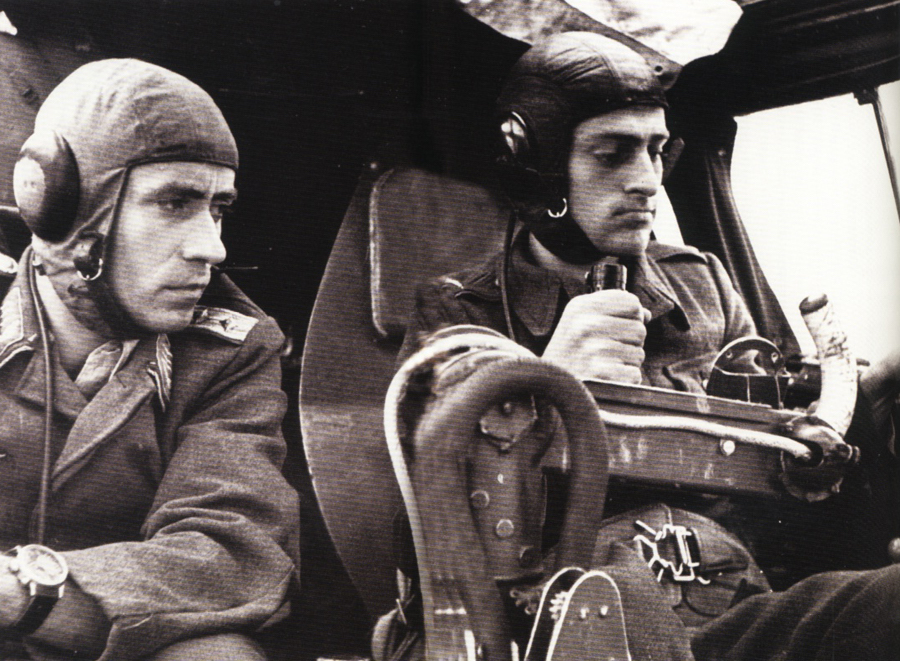
By 1962, the brand was Europe’s largest producer of mechanical stopwatches and the market leader. In fact, all watch production stopped in the late 1950s and the company focused solely on stopwatches. It wasn’t until the early 1970s that standard watch production resumed en masse with the dawn of the quartz era.
In 1926, however, pocket and wristwatch production began alongside stopwatches and Wilhelm focused on developing in-house movements. The company expanded with a second manufactory in Gütenbach, Germany in 1934 and the first Hanhart chronograph launched in 1938. It was powered by the company’s in-house, single-pusher Calibre 40.
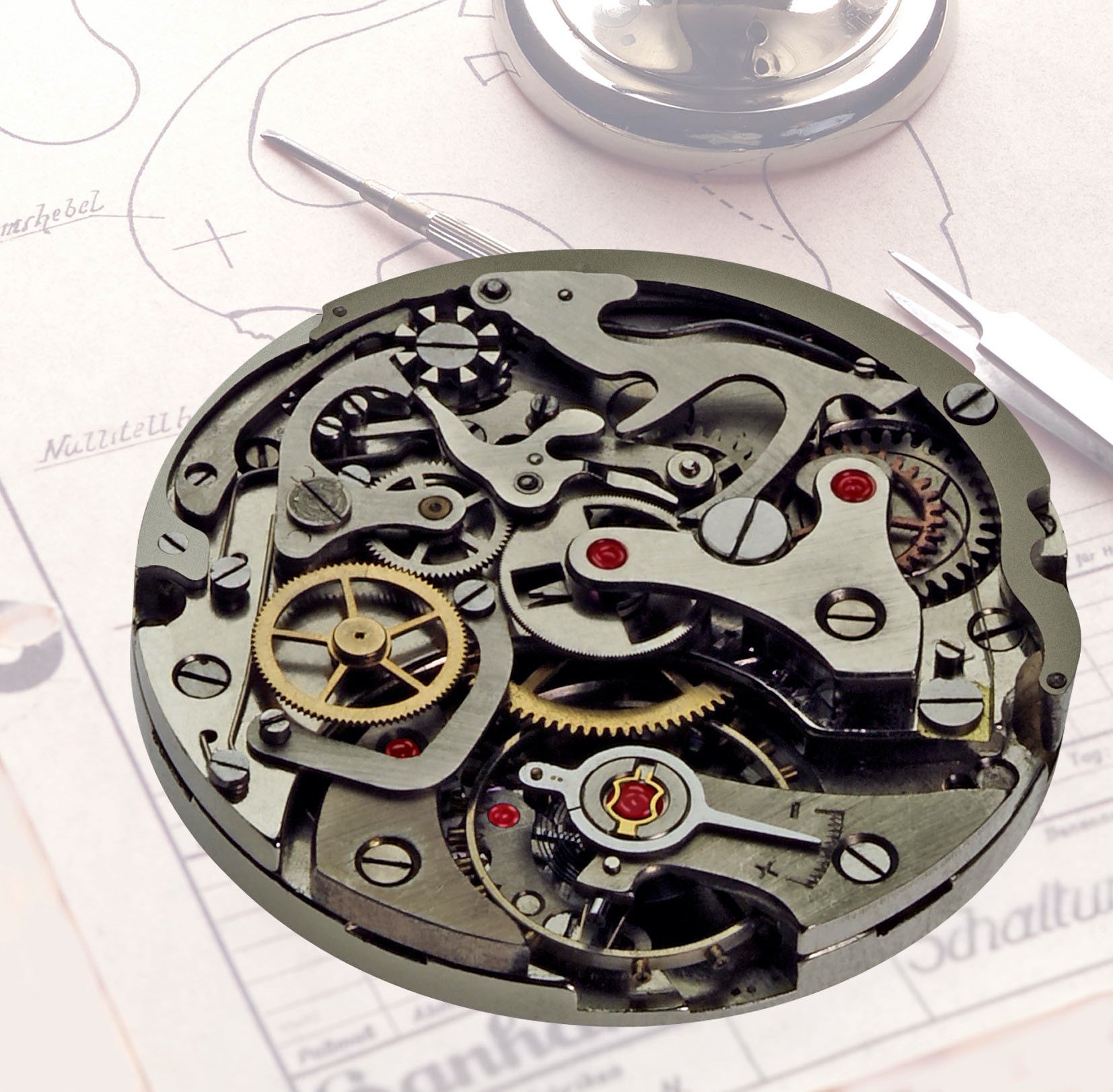
The model quickly became popular with both German pilots and naval officers during the war. A year later, the TachyTele pilot’s chronograph launched with the new Calibre 41, a double-pusher flyback movement. This bi-compax model featured a tachymeter and telemeter on the dial to measure both speed and distance, and the now-iconic red pusher to prevent accidental resetting.
Legend has it that a pilot noticed his girlfriend had painted the bottom pusher of his Hanhart chronograph with red nail varnish so he’d always be reminded of her. Whether or not this is really how the red pusher began, most Hanhart chronographs have featured the colour ever since. The modern TachyTele chronograph is part of the brand’s PIONEER collection that consists of mostly vintage-inspired chronographs and a few three-handers.
The Modern Hanhart Pioneer TachyTele
The reissued model, not a novelty per se but still a very good-looking piece, comes with a 316L stainless steel case measuring 40mm in diameter and 15mm in height. It’s a bit on the chunky side but has a tough overall vibe as did the original. The fluted bezel has a classic red mark at 12 o’clock, similar to Tutima models like the Grand Flieger Classic Chronograph. It also rotates, allowing events to be timed for over 30 minutes, although not with exacting accuracy. The pushers are asymmetrical with the top farther from the crown than the bottom, which is identical to the 1939 model.
On the Hanhart Pioneer TachyTele, the bottom pusher has the classic red colouring via a durable ceramic/plastic mixture, replacing the vintage red lacquer. As is required for a pilot’s watch, legibility is excellent with large Arabic numerals and cathedral-style hands coated with Super-LumiNova. The dial comes in either off-white or matte black, with the black providing more contrast against the dial elements.
Surrounding the outermost perimeter is the red telemeter scale (just inside of the seconds track), measuring distance by tracking the speed of sound. For example, the measure between the flash of a distant explosion and audible burst indicates distance. The red tachymeter is an inner ring surrounding the hour and minute hands and is used to measure speed. The chronograph seconds hand is painted in a matching red, as is the 3 o’clock sub-dial hand for the 30-minute counter. The 9 o’clock sub-dial features the small seconds. Both sub-dials also feature a nice snailed pattern for a bit of additional contrast. A sapphire crystal with anti-reflective coatings on both sides protects the dial and the screw-down caseback is solid steel. The watch is water-resistant to 100 metres.
The heart of the Hanhart Pioneer TachyTele is calibre HAN3703 chronograph, based on the ETA (Valjoux) 7753. Hanhart modified the movement to feature an asymmetrical layout of the pushers that mimic the original Calibre 41. The movement has 27 jewels, beats at 28,800vph (4Hz) with a 42-hour power reserve. Functions include central hours, minutes and chronograph seconds, small seconds at 9 o’clock and a 30-minute counter at 3 o’clock. This differs from the hand-wound original, but I suspect most buyers will appreciate the convenience of an automatic calibre.
There are two strap options including calfskin leather in black, dark brown or light brown with two steel rivets for a wartime vibe. A stainless steel bracelet can also be fitted. Small, medium and large strap sizes are an option when ordering as well. The Hanhart Pioneer TachyTele retails for EUR 1,940 for calfskin models and EUR 2,140 for the stainless steel bracelet. For more information, visit Hanhart’s website and orders can be placed at the company’s online store.

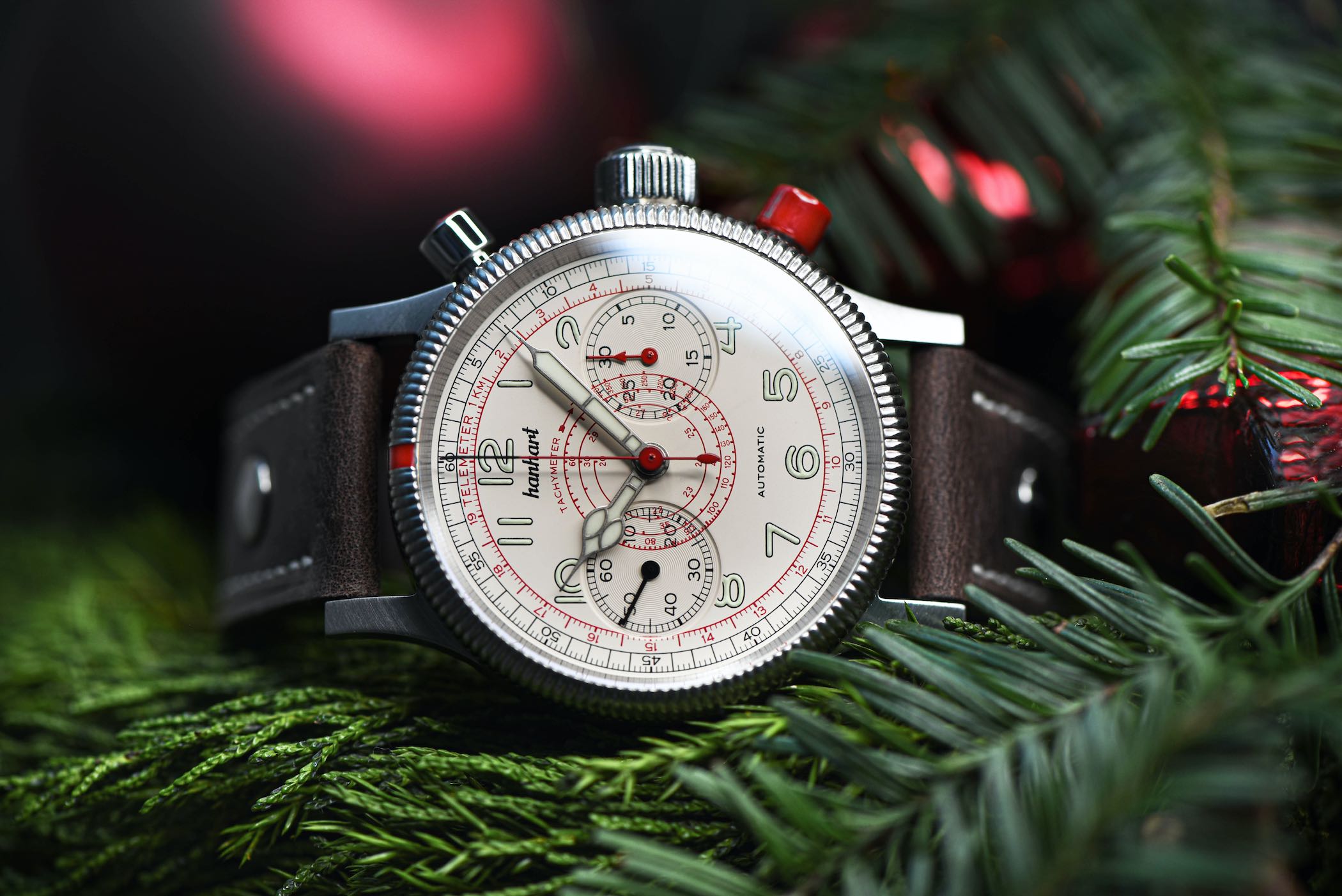
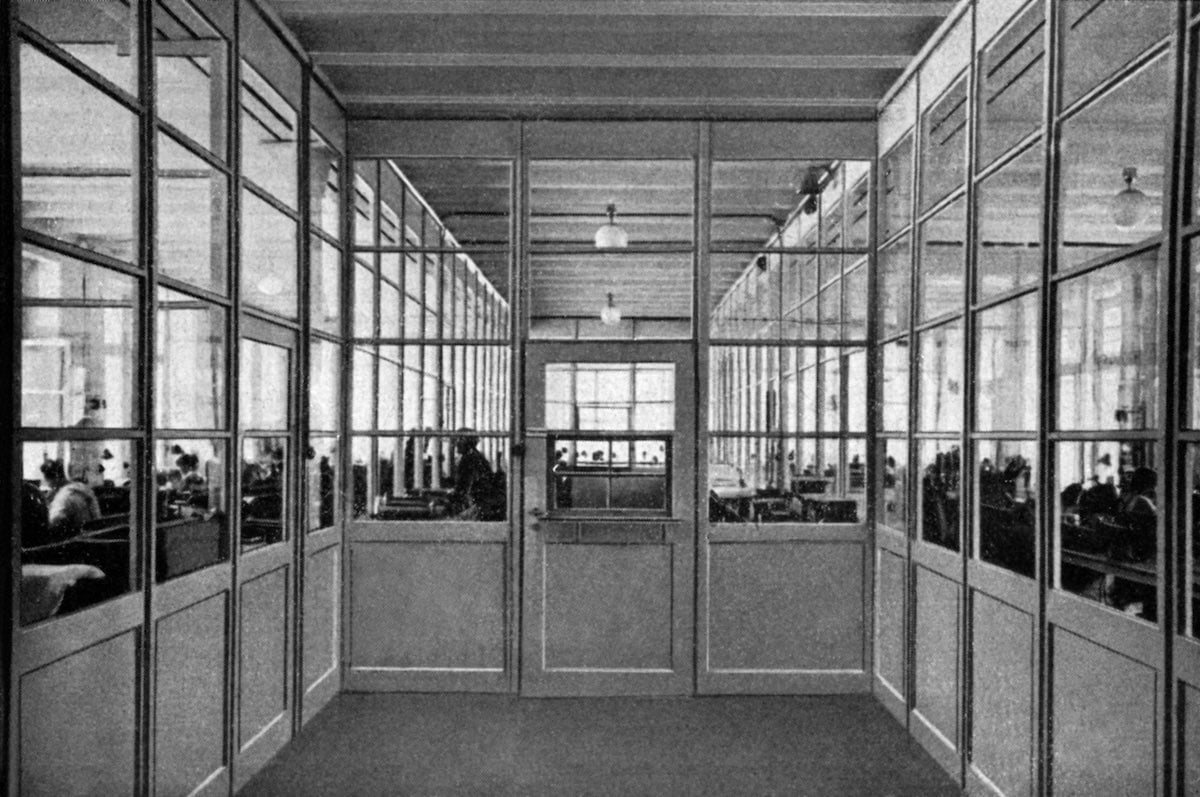

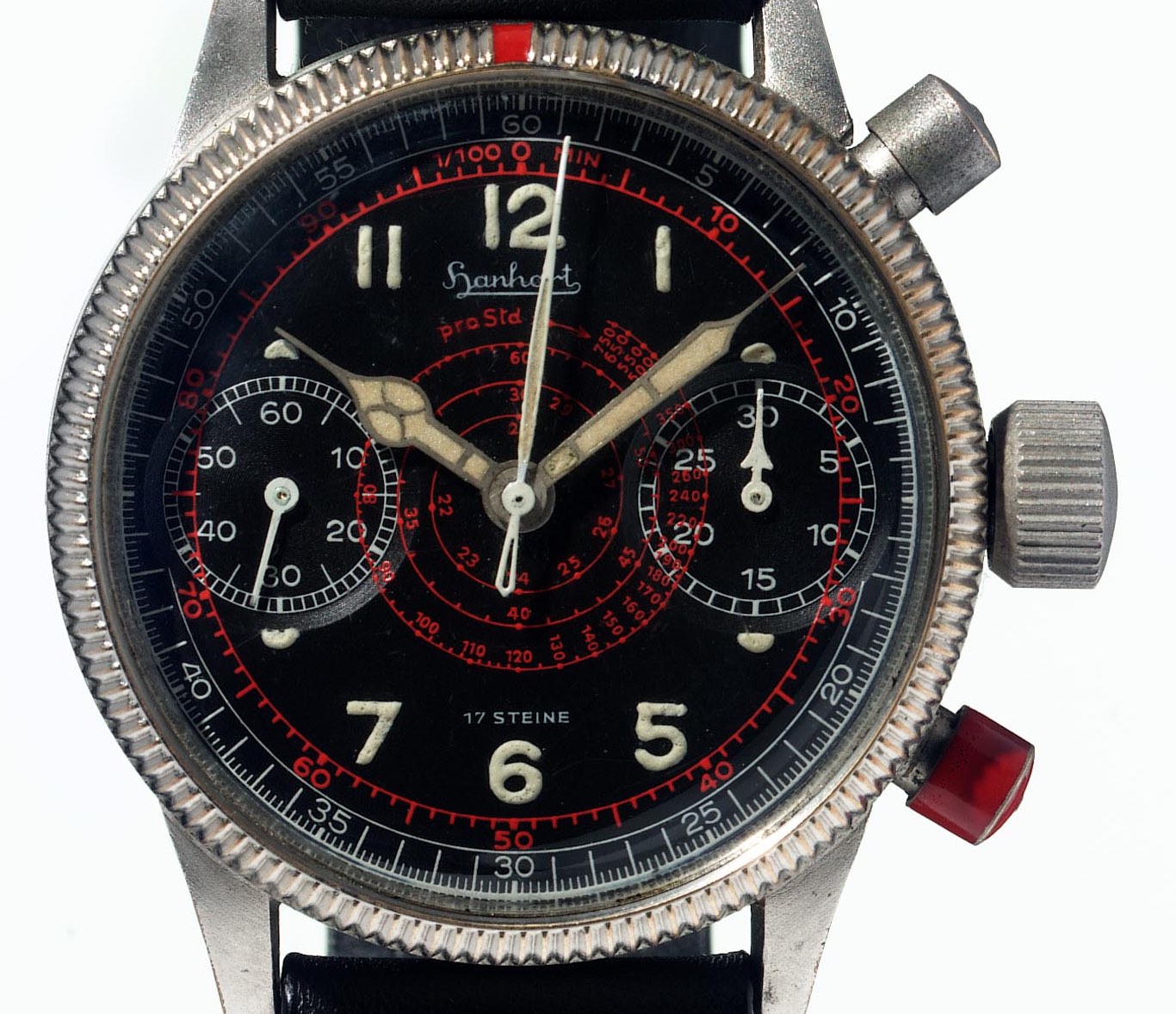
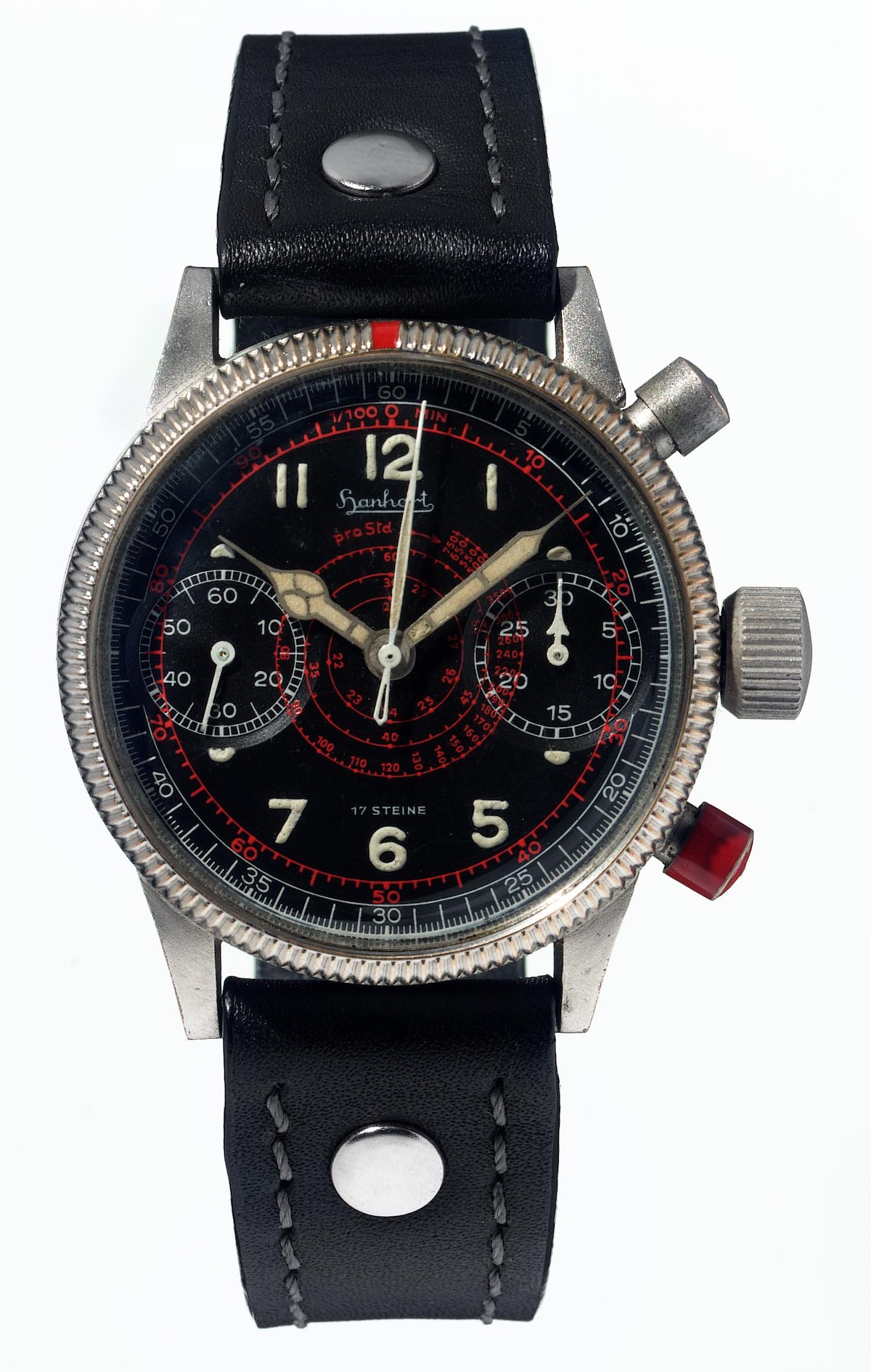
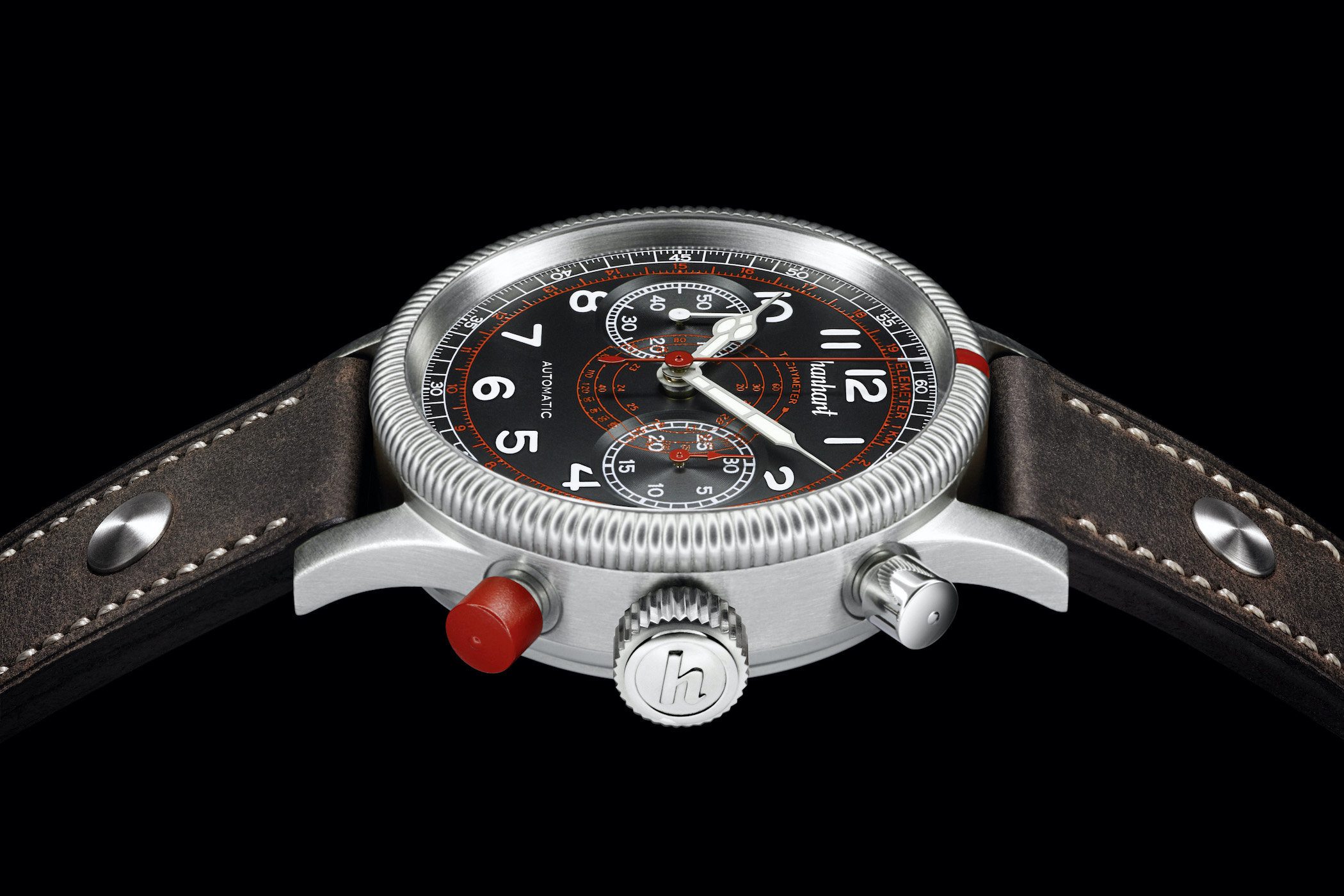
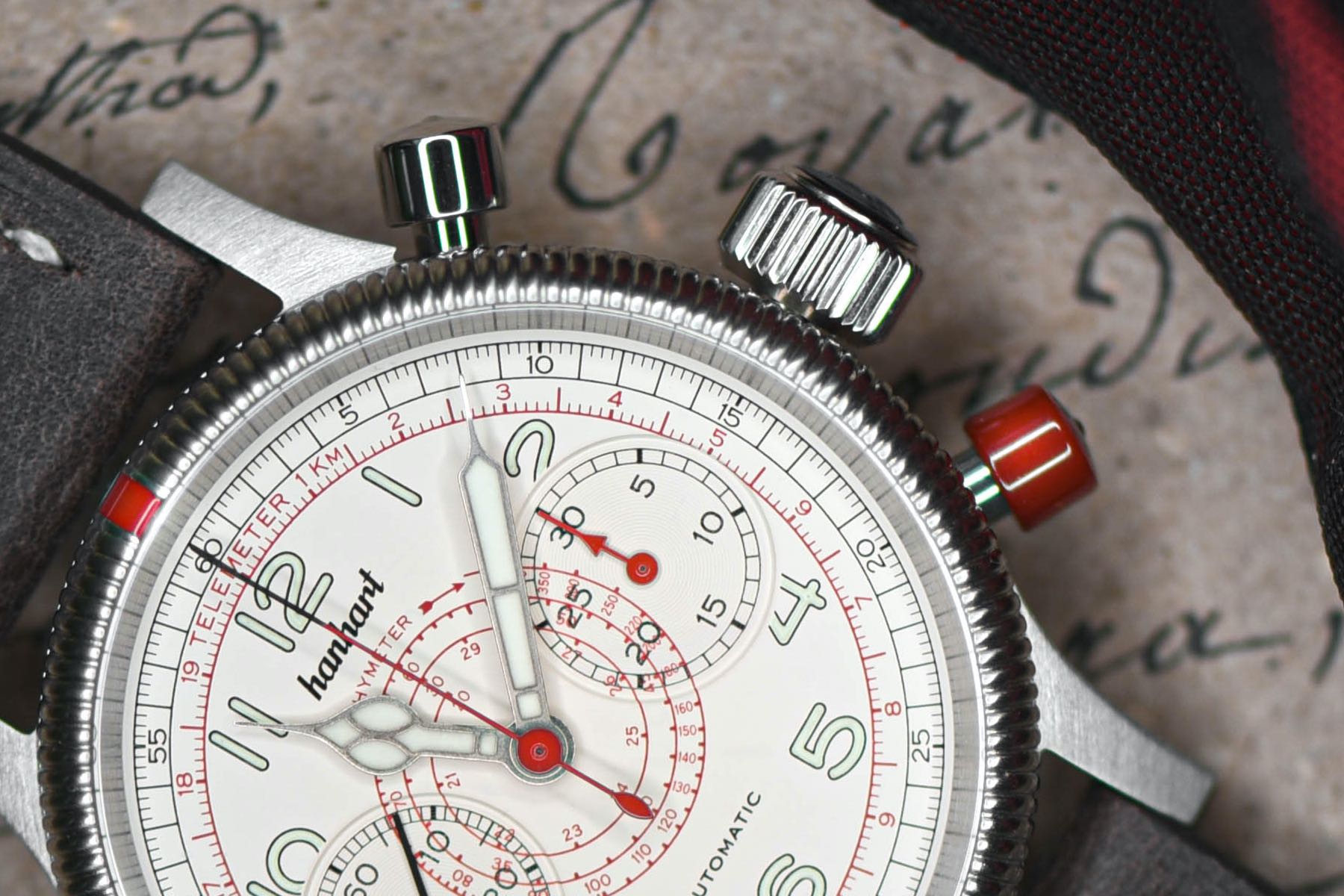
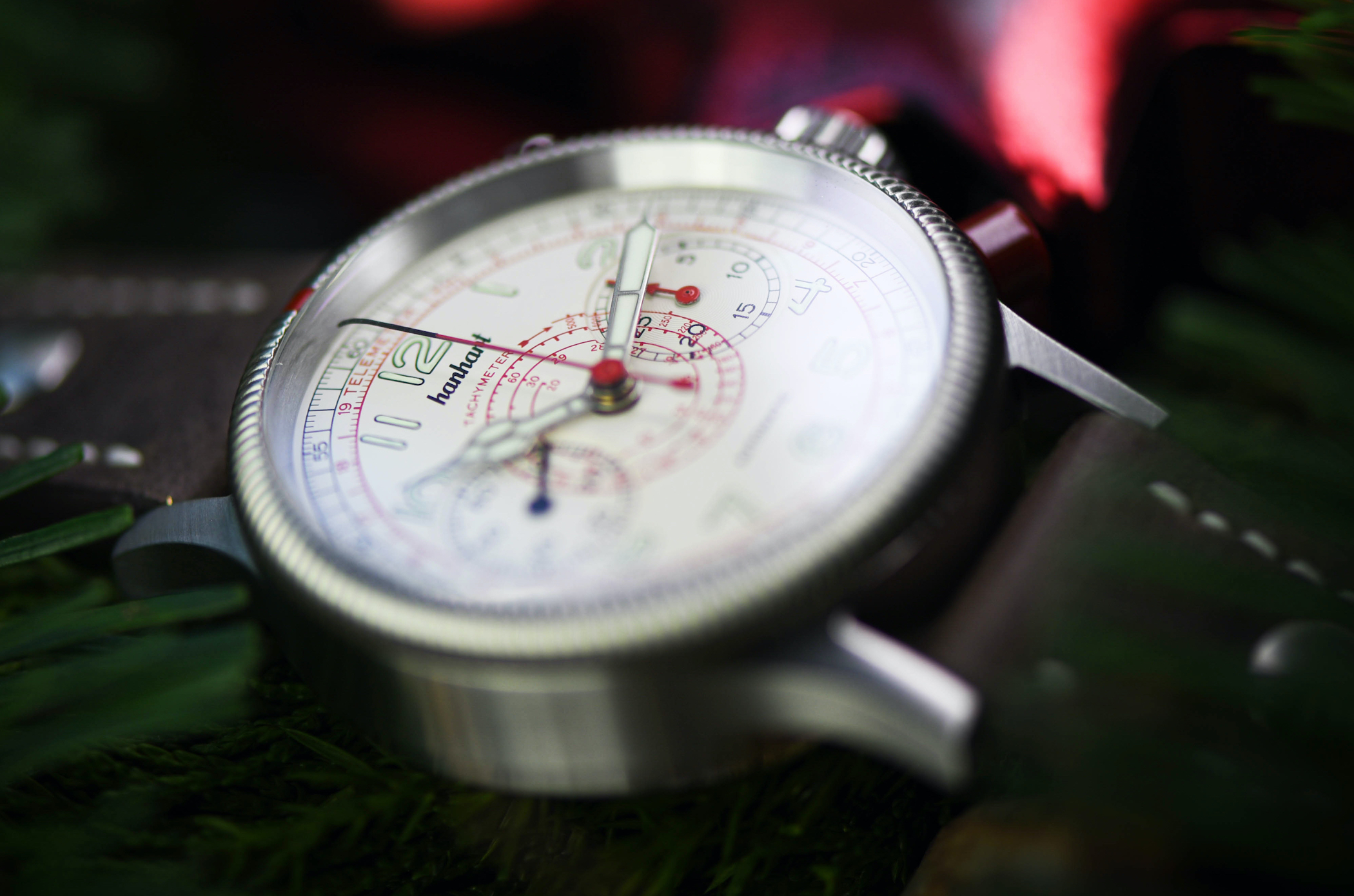
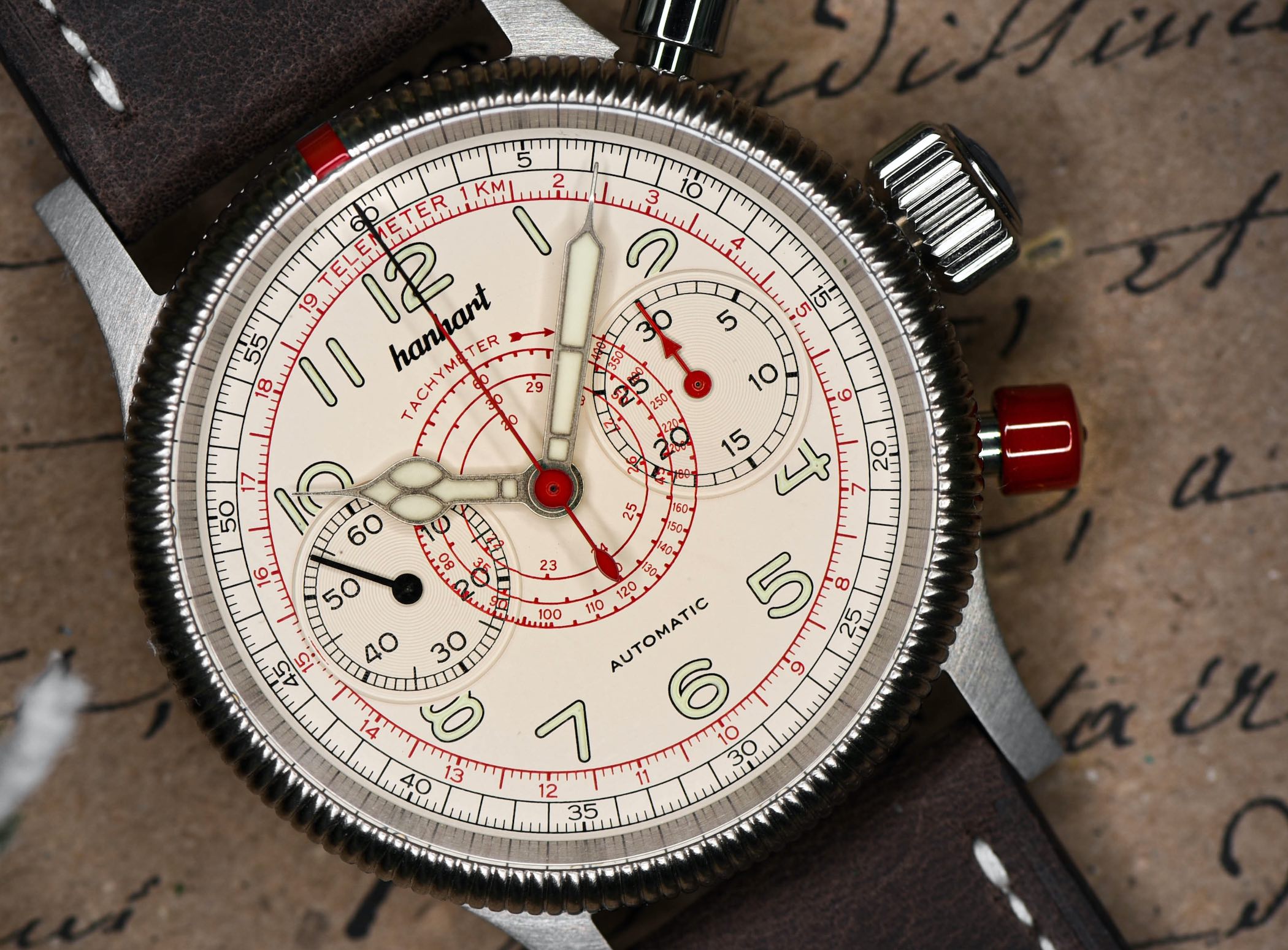
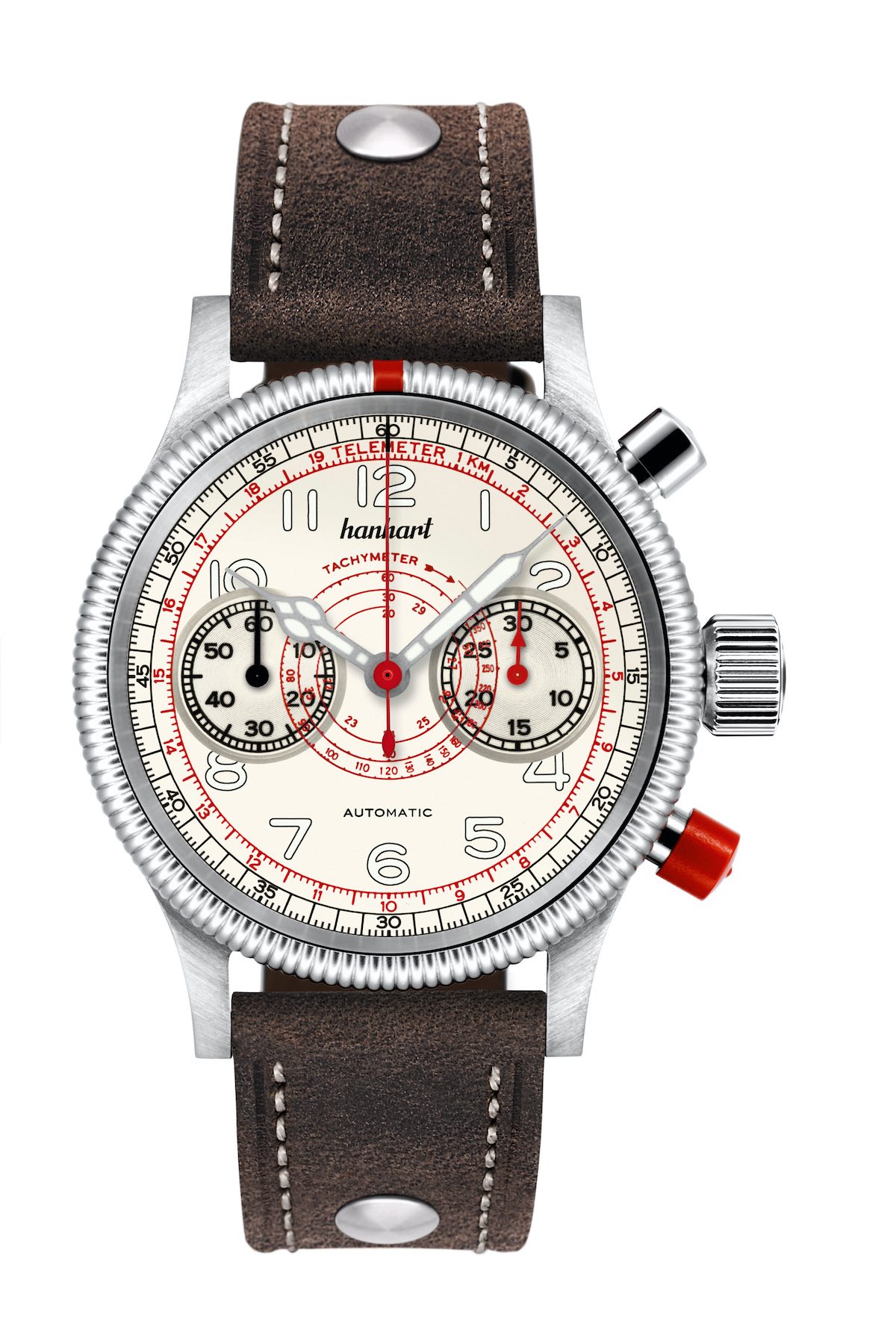
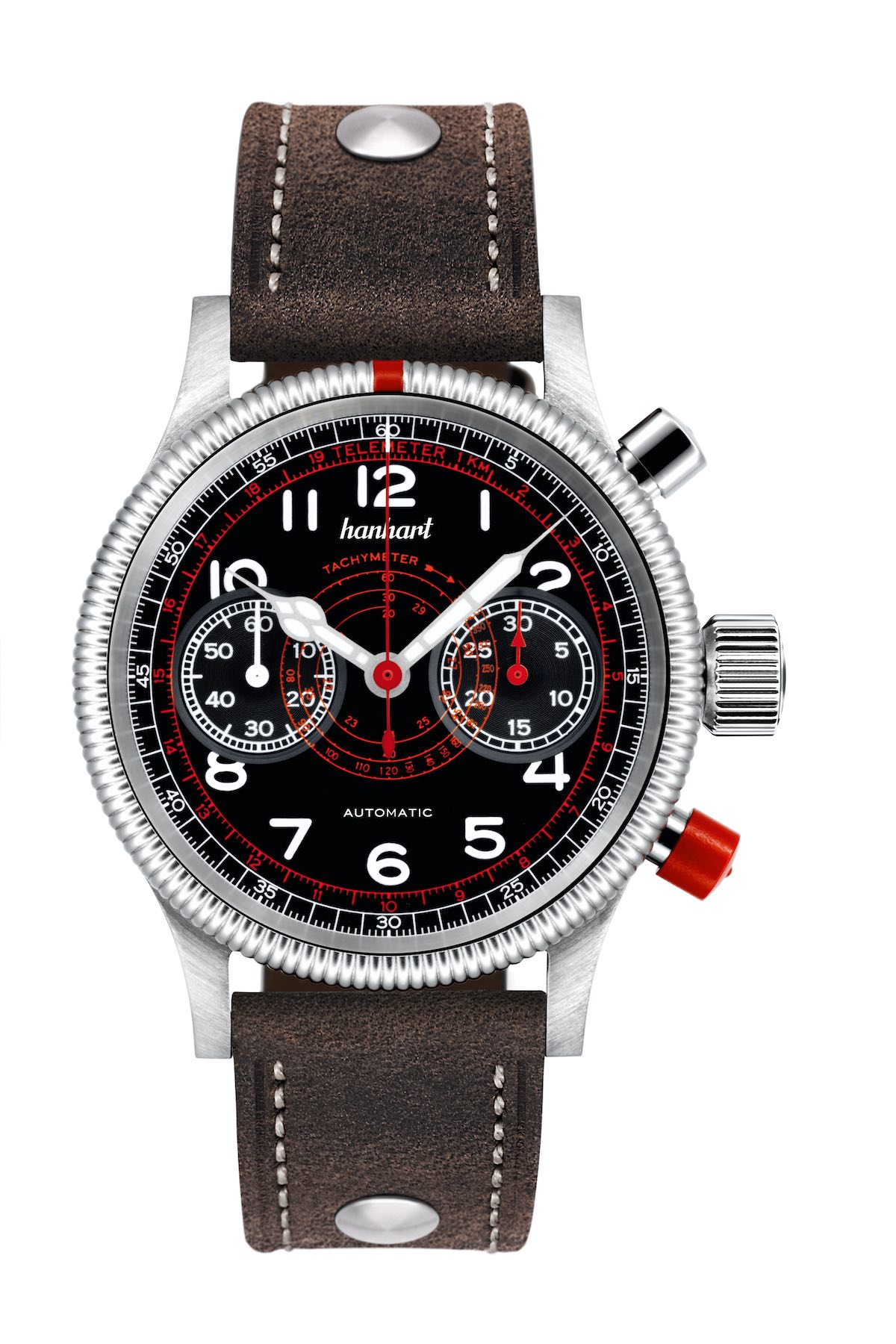



5 responses
Still favoured by pilots TODAY?? Come on…
Why not? German pilots in restaured Messerschmidts. Beside it not everybody that flies small avionets sports a gold Breitling. Of course modern Luftwaffe pilots used Tutimas.
Because realistically, they all use satellite guided electronic instruments for mearsuring time and distance and whatever. Computers.
It is a shame that the original caliber (that good looking hanhart caliber 41) was not included in this reedition (instead of using an ubiquitious valjoux 775X)
Por supuesto que ahora las computadoras manejan todo con respecto a las mediciones que antes se hacían con los relojes mecánicos pero es un instrumento hermoso lleno de historia y de elegancia